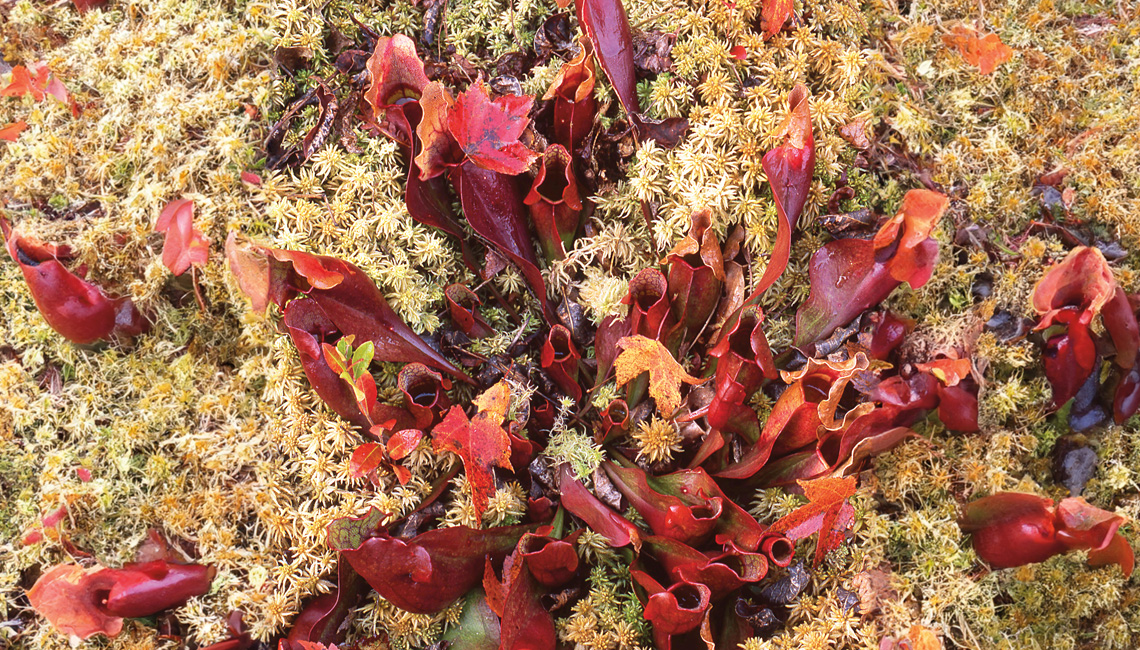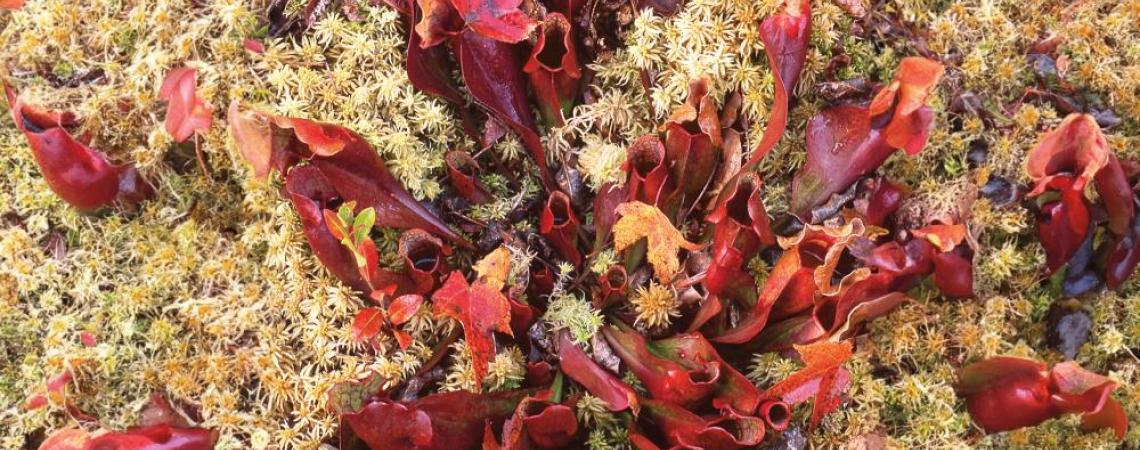It took more than 6,000 years for the last ice sheet, the Wisconsin Glacier, to spread across what is now Lake Erie and Ohio, at an average rate of about 160 feet per year. In doing so, it set the stage for peatland ecosystems — bogs and fens (see the red box below if you don’t know what they are) — to make their appearance in the Great Lakes region.
Those bogs and fens, as it turned out, became habitats for some strange natural phenomena, says Guy Denny, author of Peatlands of Ohio and the Southern Great Lakes Region (Kent State University Press, 2022) and one of the Buckeye State’s leading naturalists.
The fleshy leaves of spatulate-leaved sundew are covered with glandular tentacles tipped with droplets of sticky secretions that attract and then entangle insect prey.
“Even into medieval times, bogs and fens remained mystical and frightening places,” says Denny, a member of Mount Gilead-based Consolidated Cooperative. “Fueling some of those fears was a natural phenomenon known as ‘will-o’-the-wisp’ or ‘jack-o’-lantern’ — a mysterious, flickering light often observed hovering and moving around at night within bogs, swamps, and marshes.
“In folklore, they were thought to be nefarious ghostly spirits,” says Denny, who was inducted into the Ohio Department of Natural Resources Hall of Fame in 2021. “In reality, it was small amounts of methane gas escaping into the atmosphere from the anaerobic decay of peat.”
That spooky otherworldliness seems to make those bogs and fens the perfect setting to find another of Ohio’s other slightly scary natural phenomena that reside there: carnivorous plants. But not to worry — the specially adapted flora only prey upon insects, not humans.
Spatulate-leaved sundew
The fleshy leaves of sundew are covered with glandular tentacles tipped with droplets of sticky secretions. “The common name ‘sundew’ is in reference to how the droplets glisten in sunlight, resembling morning dew,” Denny says. “The sweet and very sticky substance topping the tips of the tentacles attract and then entangle insect prey.”
The more the prey struggles, the more tentacles bend over to further entrap it. Slowly, the tentacles force the prey downward onto the surface of the leaf, which at the same time folds over the prey. On the surface of the leaf are glands that secrete digestive enzymes. Ultimately all the process leaves behind is the indigestible chitinous material that once formed the exoskeleton.
Denny says the entire process takes from three to 20 minutes, depending upon the size of prey. The sundew leaf then slowly reopens to repeat the process with its next unlucky insect victim.
Northern pitcher plant
Pitcher plants, as their name implies, have a basal rosette of colorful pitcher-like leaves incredibly well designed for attracting, trapping, and consuming insects. “Upon landing on the collar of a leaf, prey, such as a wasp, hangs on while lapping up nectar, which, by some accounts, contains an intoxicant that seems to disorient its victim,” Denny says. There’s an ample supply of sweet nectar, but the surface also contains hundreds of stiff, downward-pointing bristles, directing the victim into the depths of the leaf. Just below the bristle zone is a smooth, slippery surface, where the prey eventually loses its footing.
Microscopic magnification shows the slick zone is made up of special cells laid down one atop the other, like shingles on a roof. The cells are both sticky and easily dislodged. As the victim struggles to keep from sliding further into the plant, cells break off and adhere to its feet and body, weighing it down and accelerating its plunge into the liquid contents of the pitcher-like leaf. The prey eventually drowns and sinks to the bottom of the pitcher, where it is digested and its nutrients absorbed into the plant.
W.H. “Chip” Gross is Ohio Cooperative Living’s outdoors editor. Email him with your outdoors questions at whchipgross@gmail.com. Be sure to include “Ask Chip” in the subject of the email. Your question may be answered on www.ohiocoopliving.com.
Bogs and fens?
If you don't know the difference between a bog and a fen, this little saying might help: "Fens flush and bogs back up." It means that fens are sustained by underground water sources, such as a mineral-rich spring; bogs, on the other hand, depend upon precipitation or surface water to replenish them.











